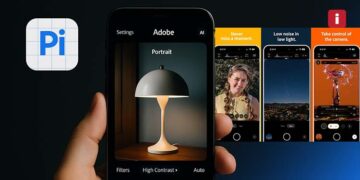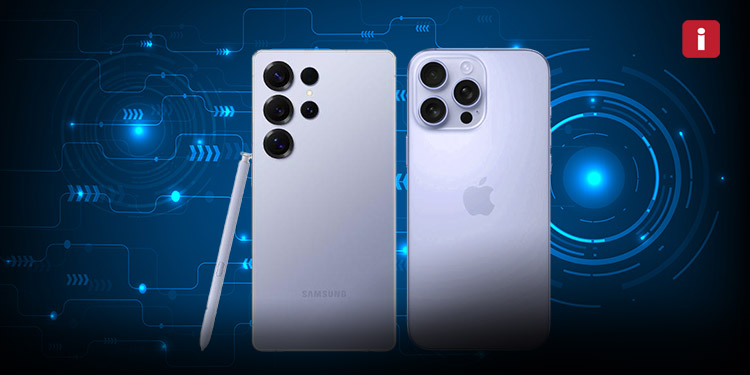The AI revolution is quietly embedding itself into the devices we use every day, none more so than the smartphone. As Apple and Samsung race towards launching their next-generation flagships the iPhone 17 and Galaxy S26 the true transformation isn’t just in cameras or displays. It’s under the hood, in the chipsets and silicon powering a new breed of “AI phones.”
This isn’t just about AI doing tricks. This is about AI becoming the core of your smartphone experience.
The Rise of the AI Processor | Why Your Next Phone Needs a Strong NPU
Smartphone chipsets have always competed on CPU and GPU performance. But in 2025, the real battlefield is the NPU Neural Processing Unit. Designed specifically to handle machine learning workloads, NPUs are what enable real-time voice translation, intelligent photo editing, on-device language models, and more.
Apple’s Neural Engine, first introduced in the A11 Bionic, now handles over 15 trillion operations per second in the latest A18 Pro chip. Qualcomm’s Snapdragon X80 boasts an even faster Hexagon NPU with fused AI processing across CPU, GPU, and DSP cores. Google’s Tensor chips double down on AI with custom silicon for voice recognition and image processing.
These chips don’t just add AI, they are AI.
Why it matters:
- Speed: AI tasks like real-time translation and photo enhancement happen instantly.
- Privacy: No cloud servers needed—your data stays on your device.
- Efficiency: NPUs are optimized for AI workloads, reducing strain on the battery.
AI-Powered Camera | Redefining Photos & Videos
If you’ve used features like Night Mode or Magic Eraser, you’ve seen AI at work. But we’re just scratching the surface.
In 2025, computational photography has reached the point where your phone doesn’t just capture a photo—it creates it. The iPhone 17 is rumored to feature a re-engineered Neural Engine capable of fusing data from multiple lenses in real time, correcting depth, lighting, and color dynamically. Expect video stabilization that adjusts frame-by-frame using AI motion detection.
Samsung is pushing similar boundaries. The Galaxy S26 is tipped to launch with on-device generative video tools think background replacement, live scene relighting, and intelligent object removal, all without touching the cloud.
What’s coming:
- Multi-frame fusion for richer low-light images
- AI-generated portrait lighting
- Context-aware editing tools
- Near-instant video rendering and effects
- AR enhancements that blend virtual objects seamlessly into live footage
Beyond Voice Assistants | Smarter AI, More Human UX
Voice assistants like Siri and Google Assistant are evolving from reactive helpers to proactive, personalized agents. That evolution is powered by on-device AI.
Expect the iPhone 17 and Galaxy S26 to feature versions of Siri and Google Assistant that feel more like AI companions predicting your next message, surfacing useful widgets before you need them, and learning your habits over time. This is where AI meets UX.
Google has hinted at Android 15 bringing adaptive UIs—interfaces that shift based on context, location, or even mood. Imagine your phone switching to “Focus Mode” during work hours, or dimming blue light and hiding distractions at night—without being asked.
Apple, too, is exploring an intent-based UI for iOS 19, powered by local LLMs that interpret user behavior on-device.
AI will personalize your phone in ways we’ve never seen:
- Predictive automation (smart alarms, app launches)
- Dynamic home screen layouts
- Intelligent notifications
- Enhanced accessibility features
- Secure, fast biometric authentication
Looking Ahead | What to Expect in iPhone 17 & Galaxy S26
While official specs remain under wraps, leaks and patent filings offer intriguing glimpses into the future:
iPhone 17 predictions:
- A19 Pro chip with upgraded Neural Engine (20+ TOPS NPU)
- On-device LLMs for advanced Siri and offline dictation
- AI-enhanced AR features for Vision Pro integration
- Smart camera array with AI-driven lens switching
Galaxy S26 possibilities:
- Snapdragon X85 with dual NPUs and faster AI fusion
- Live language translation overlays in video calls
- Offline Google Assistant with personalized memory
- Generative AI wallpaper, video editor, and security features
Battery Life & the AI Trade-Off
One of the biggest questions: can phones handle more powerful NPUs without draining battery?
Apple is investing in next-gen 3nm silicon that’s more power-efficient. Samsung, meanwhile, is rumored to be developing a hybrid power management chip that dynamically shifts power between CPU/GPU/NPU based on task.
We may also see AI contribute to managing battery life itself by learning usage patterns and allocating resources smarter.
The Human Element | AI That Feels Invisible
There’s a fine line between helpful AI and intrusive tech. The future of AI phones will depend on how well companies maintain that balance.
AI should feel like magic not like surveillance. The best experiences will be subtle: a smarter camera, a more intuitive UI, a voice assistant that knows when not to interrupt.
If the iPhone 17 and Galaxy S26 succeed, it will be because they make AI feel natural. Not just advanced.
Final Thoughts
We’re entering the era of the AI-native smartphone. Just as we once shifted from keypad phones to touchscreens, we’re now transitioning into devices that think and adapt.
The iPhone 17 and Galaxy S26 aren’t just hardware refreshes. They’re likely to be the first truly AI-first phones where the Neural Engine or Hexagon NPU is as important as the screen or camera.
So the next time you swipe to unlock, ask yourself: Is your phone smart? Or is it learning to become smart?
The AI revolution is already in your pocket you just haven’t noticed it yet.













































